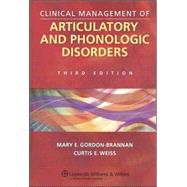
|
1 | (8) | |||
|
1 | (2) | |||
|
3 | (6) | |||
|
9 | (32) | |||
|
10 | (4) | |||
|
14 | (4) | |||
|
18 | (16) | |||
|
34 | (1) | |||
|
34 | (7) | |||
|
41 | (34) | |||
|
42 | (4) | |||
|
46 | (2) | |||
|
48 | (6) | |||
|
54 | (21) | |||
|
75 | (17) | |||
|
76 | (3) | |||
|
79 | (2) | |||
|
81 | (1) | |||
|
82 | (6) | |||
|
88 | (4) | |||
|
92 | (28) | |||
|
92 | (1) | |||
|
93 | (9) | |||
|
102 | (18) | |||
|
120 | (48) | |||
|
121 | (1) | |||
|
122 | (2) | |||
|
124 | (30) | |||
|
154 | (1) | |||
|
155 | (1) | |||
|
156 | (12) | |||
|
168 | (25) | |||
|
169 | (1) | |||
|
169 | (2) | |||
|
171 | (2) | |||
|
173 | (9) | |||
|
182 | (8) | |||
|
190 | (3) | |||
|
193 | (36) | |||
|
194 | (5) | |||
|
199 | (5) | |||
|
204 | (6) | |||
|
210 | (4) | |||
|
214 | (6) | |||
|
220 | (3) | |||
|
223 | (6) | |||
|
229 | (25) | |||
|
230 | (10) | |||
|
240 | (3) | |||
|
243 | (2) | |||
|
245 | (5) | |||
|
250 | (4) | |||
|
254 | (29) | |||
|
255 | (2) | |||
|
257 | (3) | |||
|
260 | (1) | |||
|
261 | (4) | |||
|
265 | (1) | |||
|
265 | (3) | |||
|
268 | (12) | |||
|
280 | (3) | |||
| Appendix A International Phonetic Alphabet | 283 | (4) | |||
| Appendix B Traditional Distinctive Features System | 287 | (3) | |||
| Appendix C1 Percentages of Responses Considered ``Acceptable'' in Single-Word Productions | 290 | (3) | |||
| Appendix C2 Percentage of Correct Usage of Consonants by Age | 293 | (1) | |||
| Appendix D Case History Information | 294 | (5) | |||
| Appendix E Guidelines for Effective Interviewing | 299 | (4) | |||
| Appendix F Short Test of Sound Discrimination | 303 | (1) | |||
| Appendix G The Farquar--Bankson In-Depth Test of Auditory Discrimination ---/s/ | 304 | (2) | |||
| Appendix H Sample Individualized Education Plan (IEP) | 306 | (10) | |||
| Appendix I Motokinesthetic Sound Stimulations | 316 | (2) | |||
| Appendix J Sample Clinician Verbal Instructions for Palatometric Instrumental System | 318 | (2) | |||
| Appendix K Sample Goal, Behavioral Objectives, and Procedures | 320 | (1) | |||
| Appendix L Sample Group Approach Lesson | 321 | (2) | |||
| Appendix M Example HAPP-3 Assessment Results and Cycle 1 and Cycle 2 Projected Targets | 323 | (2) | |||
| Glossary | 325 | (10) | |||
| Bibliography | 335 |
The New copy of this book will include any supplemental materials advertised. Please check the title of the book to determine if it should include any access cards, study guides, lab manuals, CDs, etc.
The Used, Rental and eBook copies of this book are not guaranteed to include any supplemental materials. Typically, only the book itself is included. This is true even if the title states it includes any access cards, study guides, lab manuals, CDs, etc.